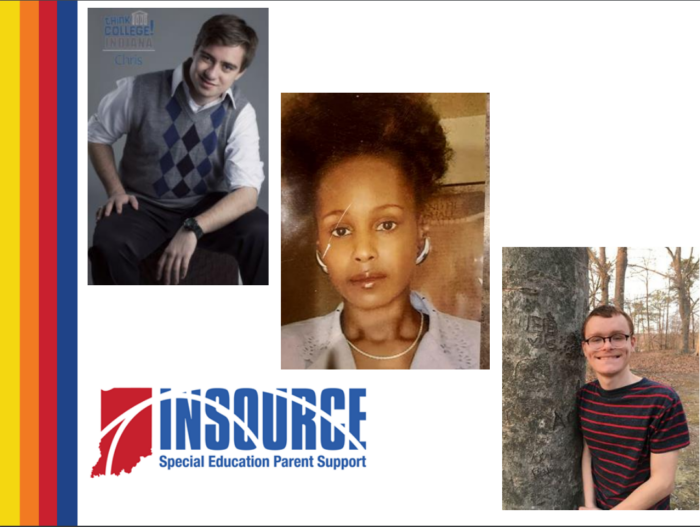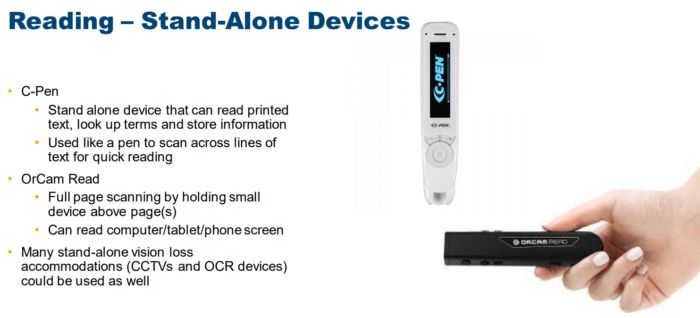
With tassels about to turn and graduation caps soon soaring in the air, last week was the perfect time for INDATA’s full-day training session on AT and Transitioning from High School.
The session covered the challenges of transitioning, the programs out there to help students with disabilities overcome those challenges and the assistive technology available to make college and adult life easier.
Easing into Adult Life
The first presentation on this topic came from professionals with intimate knowledge of the aforementioned transition — three mothers of students with disabilities. Their organization, IN*SOURCE, was founded by a group of parents in South Bend aiming to “provide high-quality information, training and support to families of children and young adults with disabilities and the individuals and organizations who serve them.”

The presentation addressed four key ways in which parents can help their children transition from high school into college and adulthood:
- Fostering independence
- Developing the individual
- Contributing to designing and enacting a transition program
- Establishing a support system
Of course, as IN*SOURCE Executive Director Dawn McGrath reminded everyone, “Transition is a lifelong process, not a moment in time. Transition planning is an individualized experience, certainly not a one-size-fits-all endeavor. But in any case, the most important effort is to develop self-determination, self-advocacy and buy-in for the individual with the disability.”
Fostering independence starts with parents encouraging their children to share their interests and pursue those passions on their own with a long-term vision in mind. “Dare them to dream,” as the presentation states.
Developing the individual involves “planning for the whole person,” which means more than just setting them up to pass classes. The two “halves” of the person would be their education and their life outside of it. So, planning here would entail their extracurricular activities, recreational interests, opportunities to engage with peers personally as well as academically, etc.

When it comes to designing a transition program, this is where parents need to let their children take the wheel in developing their Individualized Education Program (IEP). An IEP is “a written document developed by a case conference committee that describes accommodations, modifications, special education and related services that will be provided to the student.”
IN*SOURCE provides youth training in which “students can learn the basics of a case conference meeting, the contents of an IEP, the importance of participation in their own case conference and planning for the future.”
This kind of self-advocacy is especially important when students go off to college.
Giving the Old College Try

As IUPUI’s Director of Adaptive Educational Services Kevin McCracken highlighted during the training’s panel discussion, students often have little control over their accommodations in high school.
“When the student transitions to higher education, they assume full control of their accommodations,” he said. “They can decide if they want to register with the disability services office (DSO) or if they wish to attempt their studies without accommodations and without a ‘label’ indicating the presence of a disability. If they choose to register with the DSO, the student chooses the time of the semester and their accommodations. Of course, this applies mostly to students with invisible disabilities and is not universal. But the general point is that students become the primary catalyst regarding accommodations once they begin their higher education studies. In high school, most students are mere observers of this process.”
College is where “planning for the whole person” is particularly important, as it’s not only a continuation of education but a preview of adult life. Disability services are vital in helping students with disabilities not only flourish in the classroom but in their personal lives as well.
“Of course, when students transition to higher education, they encounter a significant number of changes that often include: Different living arrangements, unprecedented freedom, more rigorous studies, new social groups or even a new community,” McCracken said. “The changes in the student’s role with their accommodations parallels these other transitions. But if students fail to request accommodations and they genuinely need them, they can jeopardize their entire college experience.”
AT is Always Here to Help

The training came back around to INDATA’s key specialty — assistive technology. Director of Assistive Technology Brian Norton highlighted such classroom tools as ClaroPDF — an app in which you can annotate PDF files and have them read to you — and Otter Ai, a free note-taking app with the ability to transcribe lectures.
Norton also highlighted iStudiez Pro, which provides students an organized and easy-to-read bulletin board of sorts in which they can keep track of their courses as well as classroom locations, instructors’ info, holidays and grades.
Last but not least, Josh Anderson — manager of INDATA’s AT clinical team — shed light on tools like Smmry, a free website that allows students to upload whole articles or chunks of text for a more digestible summary of the key information. He also mentioned devices for low-vision students like C-Pen and OrCam Read, which scan text and read it to the user. (These are also helpful tools for students with dyslexia.)
“Setting sail for college is a major milestone for students with disabilities,” Norton said. “We hope this training reminds them, their parents and educators that there are plenty of resources out there to make for smooth sailing into higher education and adulthood.”
Click here to view the video of the full-day training session and explore the presentations involved.
